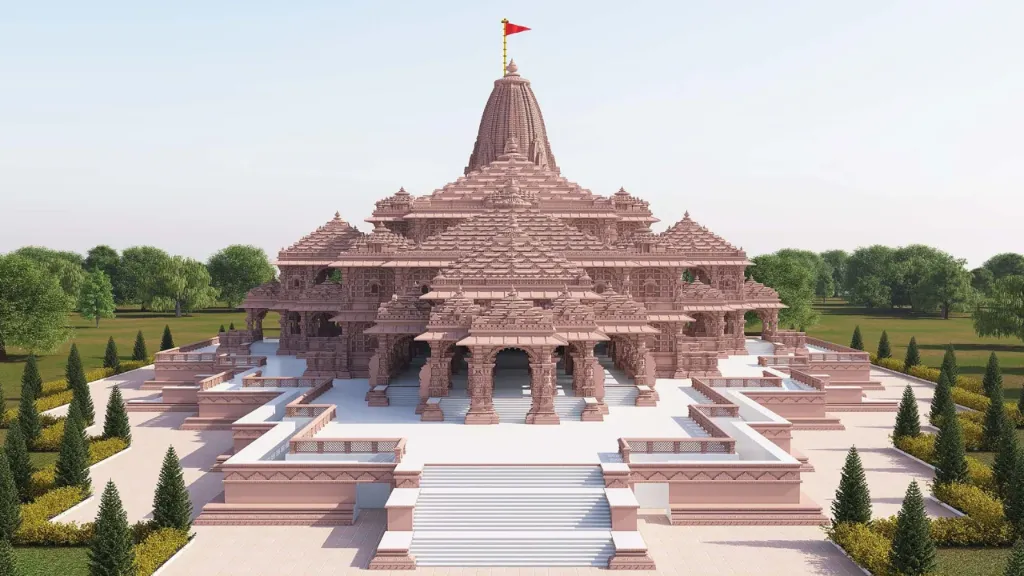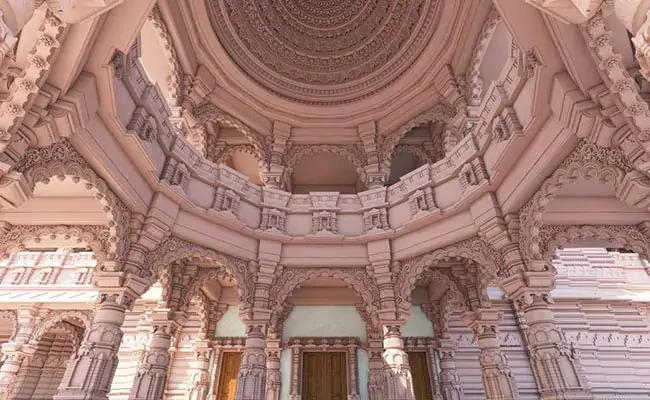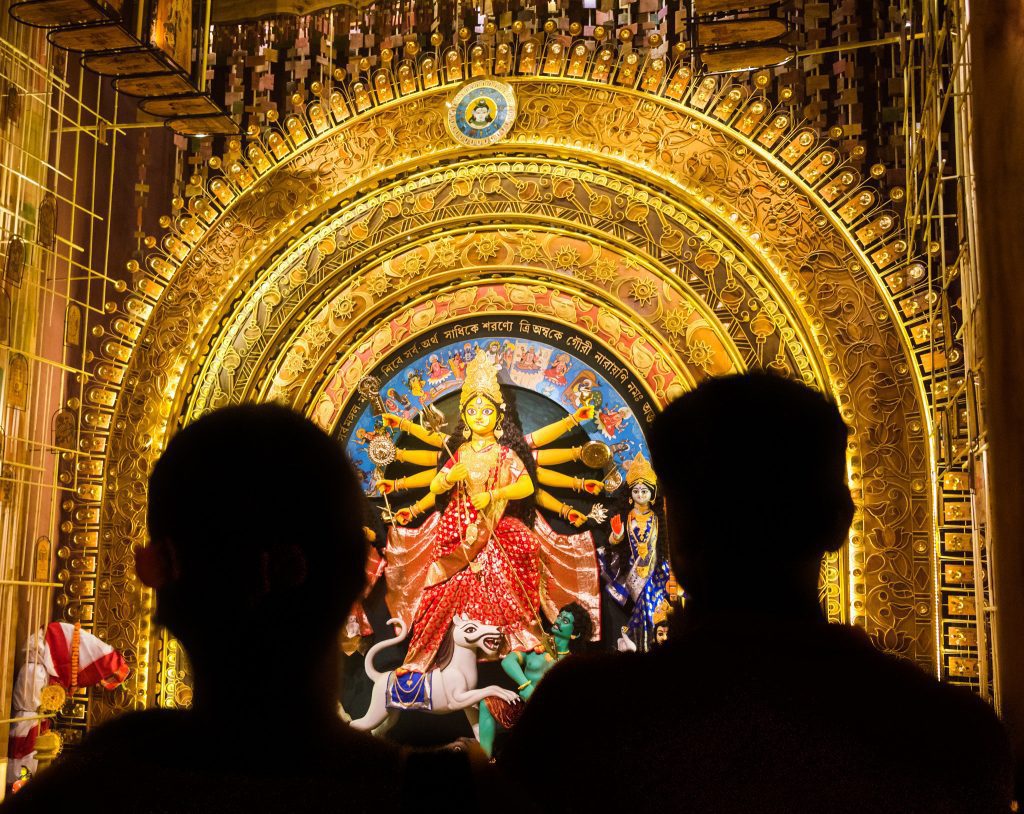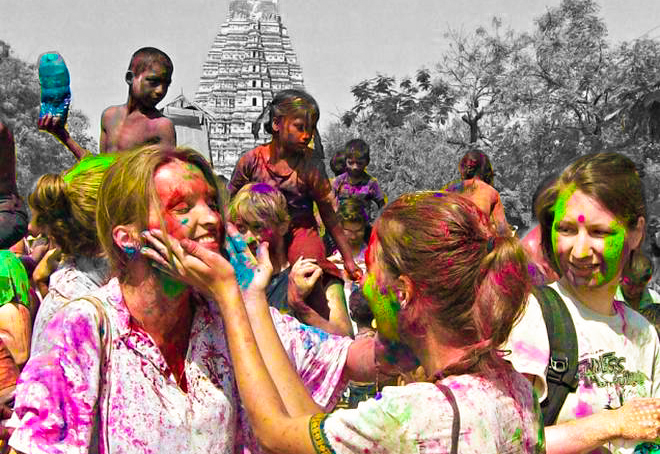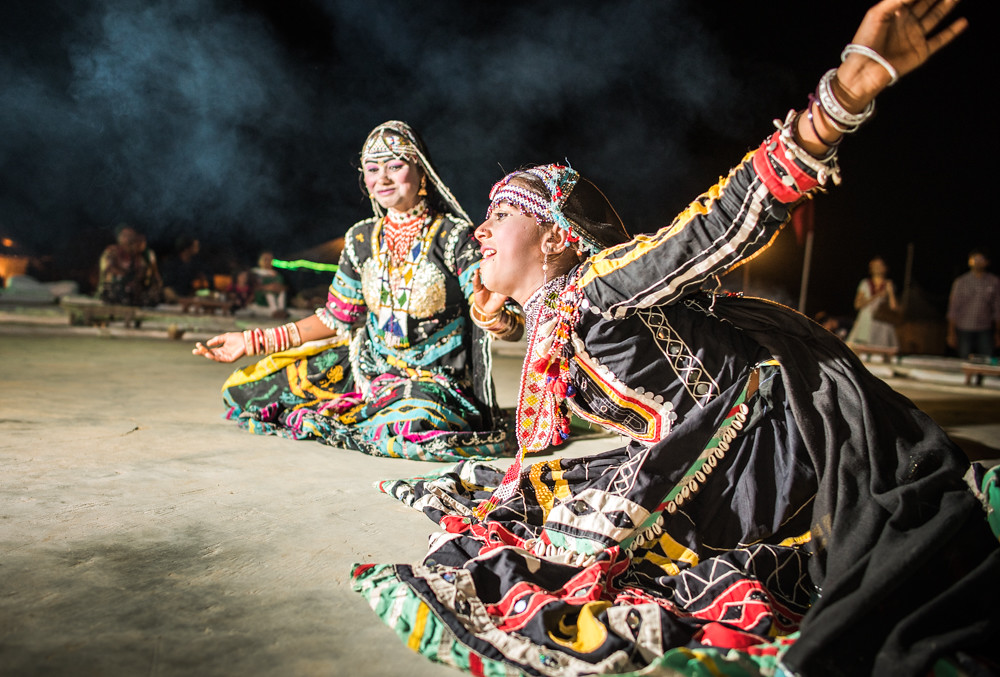Every year, as the lamps light up streets and homes during Diwali, people across India celebrate the symbolic homecoming of Lord Ram. It is a poignant moment, marking his return to Ayodhya after a 14-year exile and his victory over the demon king, Ravana. But soon, the ancient city of Ayodhya itself will resonate with chants, celebrations, and unparalleled joy as it witnesses its monumental homecoming – the inauguration of the Ayodhya Ram Mandir, also reverently known as Ram Janmabhoomi.
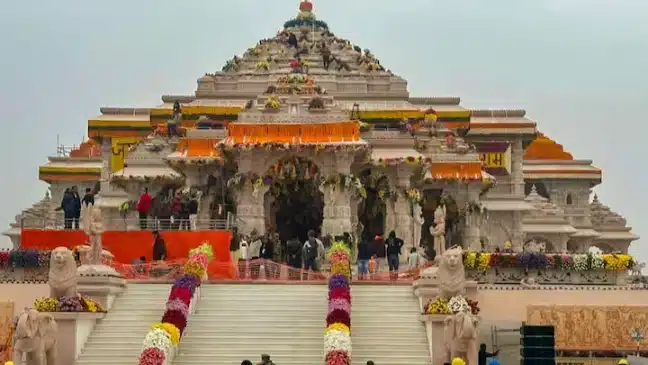
The journey to this moment has been steeped in a mixture of faith, hope, and controversy. The tapestry of the Ram Mandir’s history is woven with heated debates, age-old traditions, and a series of events that have etched deep impressions on the socio-political landscape of India. Beyond the politics and the history, there lies an architectural marvel that carries the weight of millennia of culture and faith.
In this comprehensive guide, we will unfold the layers of the Ram Mandir’s story, one that transcends bricks and mortar, and delves deep into the spiritual essence of India’s rich heritage. We navigate through the details of the Ram Mandir’s architecture, an exploration of its cultural significance, a rewind into its historical background, an insight into the various stakeholders involved, and a deep dive into the heartfelt donations that made this dream a reality.
Just as Ram returns to Ayodhya with the temple’s construction, Savaari is ready to guide you there and to nearby destinations with ease. At the heart of it all, we’ll retrace the steps of Lord Ram’s mythical return to Ayodhya, understanding why this temple is more than just a monument – it’s an embodiment of faith and a beacon of hope for millions.
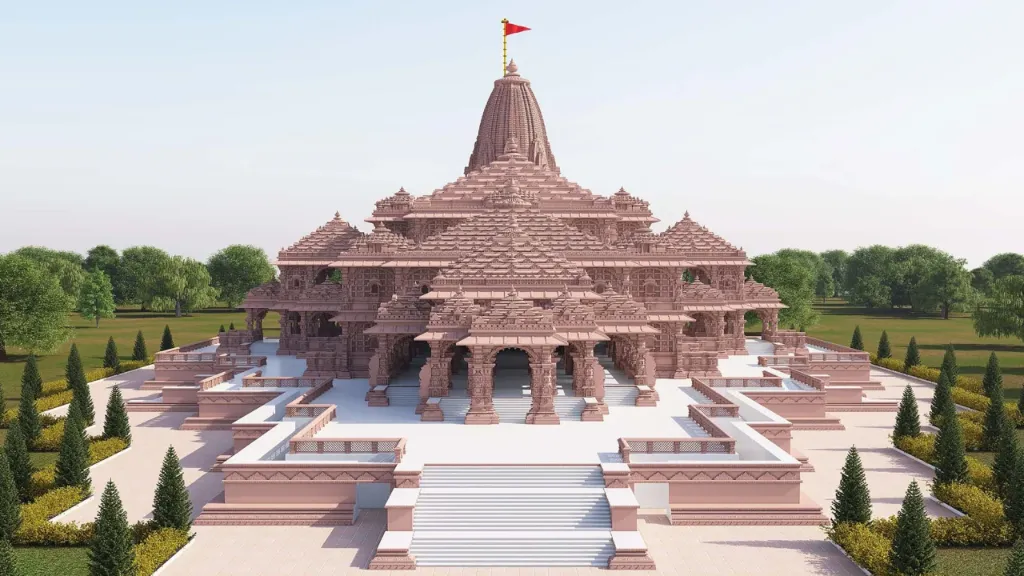
Temple tales – Legends of Ayodhya Ram Mandir
Ayodhya, often known as Saket, holds a special place in the hearts of millions. As the birthplace of Lord Rama, it symbolizes the intersection of ancient narratives with real history. Numerous sites across contemporary India bear the legacy of Lord Rama throughout Ramayana, which you can read all about here. Over time, this sacred city has witnessed the dynamics of powerful empires, the prayers of devoted saints, and the fervent devotion of its many visitors.
A temple of resilience
The story of Ayodhya Ram Mandir showcases the unyielding determination of a civilization. Tradition indicates that King Dasharatha, Lord Rama’s father, initially established the temple. Despite facing numerous challenges, including invasions and socio-political changes, the temple has seen repeated reconstructions. It demonstrates its enduring spirit and the deep reverence of those who cherish it.
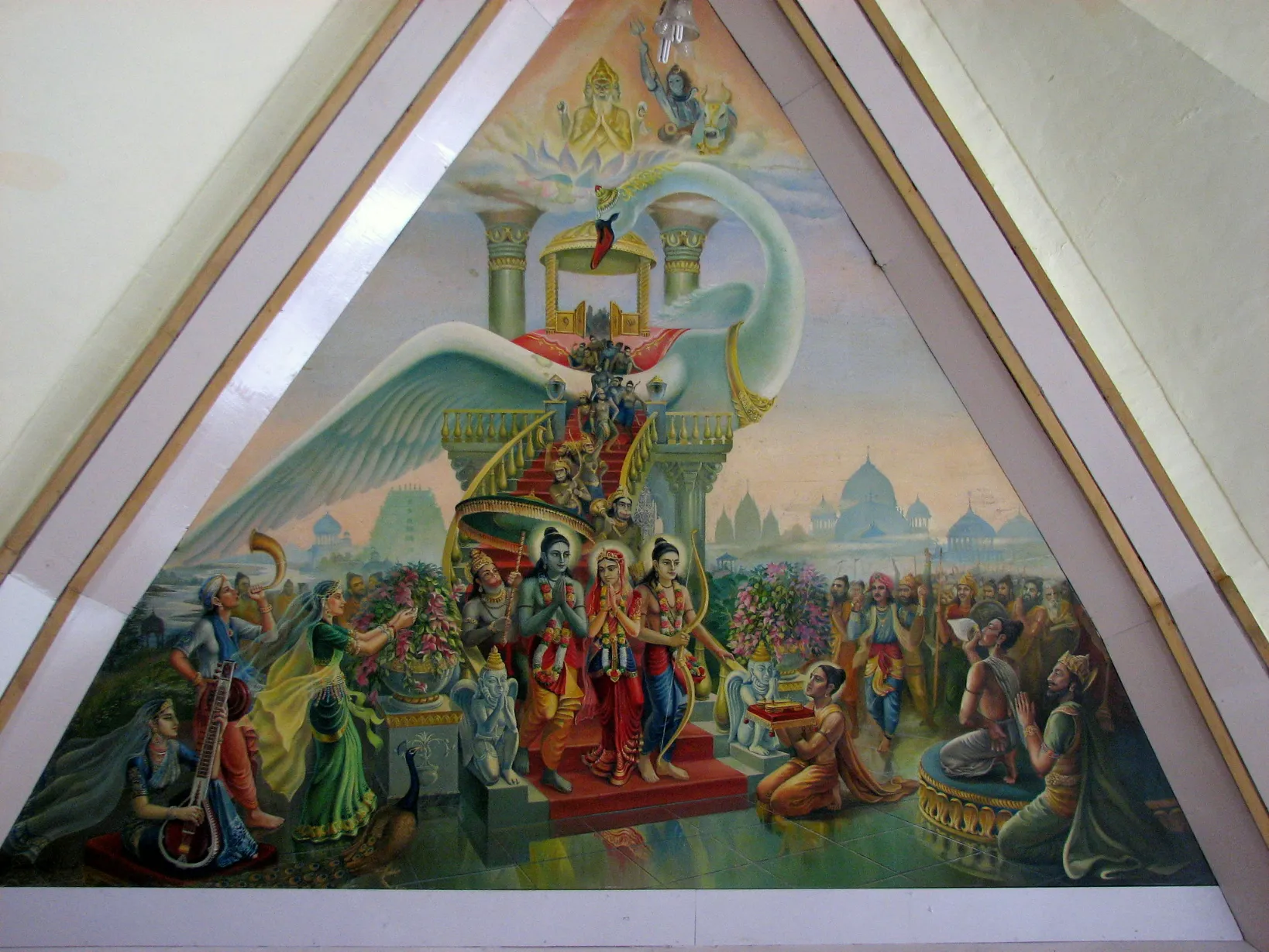
Monarchs and morality – Ayodhya’s regal past
Ayodhya’s importance stretches beyond its religious significance. Once the capital of the ancient kingdom of Kosala, the city has been home to rulers renowned for their valor and ethics, from Ikshvaku and Harishchandra to Raghu and Dashrath. Their stories are filled with honor, challenges, justice, and deep commitment.
Foundations in legend – The Manu connection
Legends infuse history with a sense of wonder, and Ayodhya exemplifies this. The Ramayana proposes that Manu, seen as the initial human in Hindu scriptures, laid the foundations of Ayodhya. This connection amplifies Ayodhya’s significance, marking it as not merely a historical site but a focal point of spiritual beliefs and traditions.
Ayodhya’s Jain mosaic
Ayodhya’s spiritual allure extends across various religions. Jain traditions also honor the city, identifying it as the birthplace of five of their revered Tirthankaras. Such blending of faiths highlights India’s rich spiritual diversity. Further underscoring its spiritual importance is Ayodhya’s distinction as one of the Mokshdayini Sapt Puris – the seven cities believed to grant the path to ultimate salvation in Hinduism.
The genesis of Babri Masjid
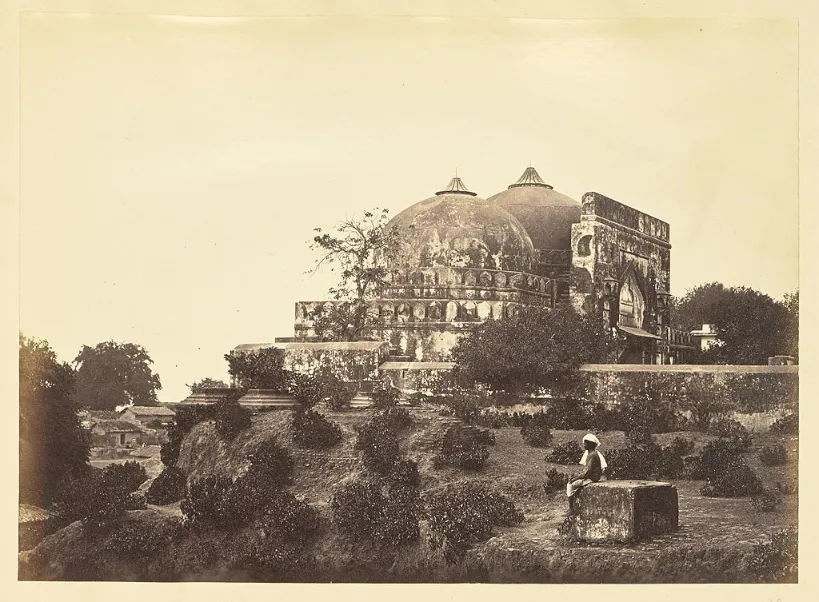
The “Babri Masjid” derives its name from the Mughal emperor Babur, who is believed to have initiated its construction. When Babar came to India in 1526 at the request of the Indian Governor to defeat Ibrahim Lodhi. One of his generals during the conquest of northeast India visited Ayodhya where he built a Mosque (There is a debate on the construction that whether it was built on the demolished site of the temple or built after demolition) and named it Babri-Masjid to give tribute to the Babar.
Before the 1940s, it was commonly referred to as Masjid-i Janmasthan, meaning “mosque of the birthplace,” a name that appeared in official records. While there’s ambiguity regarding the actual timeline of its construction, inscriptions found in the 20th century around the mosque suggest it was founded in 935 AH (1528-29) by Mir Baqi, acting on Babur’s wishes. Yet, the authenticity and era of these inscriptions remain points of contention. In 1859, British authorities put up a fence surrounding the Babri Masjid, reflecting the burgeoning belief in its significance as Lord Rama’s birth site. Despite the structure’s dominant presence, Hindus were granted access to offer their prayers in its outer precincts.
Ancestral echoes – Before Babri Masjid stood
Before the establishment of the Babri Masjid, the site, revered by Hindus as Lord Rama’s birthplace, holds an interesting account. Jai Singh II, a Mughal court’s Rajput noble, notably documented a mosque at this sacred location. In 1717, he procured land in the vicinity, founding a Jaisinghpura. Preserved documents from his tenure, showcased at the City Palace Museum of Jaipur, present a detailed sketch of the Babri Masjid’s vicinity. Interestingly, this depiction includes an open courtyard marked as ‘janmasthan’ with a prominent Ram chabutra. Moreover, the central structure in the sketch, labelled as ‘chhathi’ – indicating birthplace, intriguingly resembles the present-day Babri Masjid with its three domes.
Furthermore, the European Jesuit missionary Joseph Tiefenthaler, who resided in India from 1743-1785, visited Ayodhya in 1767. In his accounts, translated and published in French in 1788, Tiefenthaler mentioned the demolition of the Ramkot fortress by Aurangzeb and the consequent erection of a three-domed mosque in its place. He wrote about the diverse beliefs regarding its origin, with some attributing it to Babur and others to Aurangzeb. Notably, despite his extensive knowledge of Persian and Sanskrit, Tiefenthaler didn’t mention any inscriptions within the mosque endorsing its establishment under Babur’s rule. This account sparks intrigue and exploration into the many-layered stories of this historic site.
The demolition of Babri Masjid – A tumultuous chapter in India’s history
The Babri Masjid demolition in 1992 was a watershed moment that deeply fractured India’s socio-political fabric, with its aftershocks still felt today. Delving into this tumultuous period provides insight into an event that has shaped modern Indian history in more ways than one.
Background and growing sentiments
From the 1980s, a political party began to champion the cause of re-establishing a temple at the Ram Janmabhoomi site. This aspiration stemmed from a long-held belief that the mosque was constructed over a temple that marked Lord Ram’s birthplace. In the mid-1980s, the issue took a significant turn. Indian courts gave Hindus the nod to resume worship at the site after nearly half a century. Supported by the influential Congress Party of that era, this verdict breathed new life into the temple movement and ignited sentiments on both sides.
Political undertones & rising tensions
The onset of the 1990s saw an intensified push for the temple’s construction, particularly with the Bharatiya Janata Party (BJP) throwing its weight behind the cause. This sacred site, now a political battleground, bristled with tensions. One of the most significant confrontations between state forces and temple supporters occurred in 1990, setting the stage for the events to follow.
The day of the demolition
December 6, 1992, began as a day for a symbolic rally near the mosque, spearheaded by the political parties. But as the day progressed, the gathering, swelling to over 150,000 participants, took a volatile turn. Anticipating unrest, authorities had stationed a police cordon around the Babri Masjid. However, by midday, the magnitude and fervour of the crowd overwhelmed the security measures. The police, finding themselves outnumbered and outmanoeuvred, retreated. With no law enforcement in sight, the crowd took matters into their own hands. By evening, the historic Babri Masjid lay in ruins.
Aftermath & far-reaching implications
But the mosque’s demolition didn’t mark the end; it was only the beginning of a larger tragedy. India, in the subsequent months, was engulfed in communal riots, leading to the tragic loss of thousands of lives. The incident also provided extremist factions with a rationale for carrying out terrorist attacks within India. The demolition resulted in several months of intercommunal rioting between India’s Hindu and Muslim communities, causing the death of at least 2,000 people. Retaliatory violence against Hindus also occurred in Pakistan and Bangladesh. Internationally, the demolition incited retaliatory attacks on Hindu temples in neighbouring countries like Pakistan, Bangladesh, and Afghanistan.
Investigation and legal proceedings
Following the upheaval caused by the mosque’s demolition, the Indian government took immediate steps to investigate the incident. On 16 December 1992, an official inquiry was launched by the Union Home Ministry. This led to the establishment of the Liberhan Commission. Tasked with examining the circumstances surrounding the destruction, the Commission, after 399 sittings spanning over sixteen years, concluded in its extensive report that the events in Ayodhya on 6 December 1992 were premeditated.
The years that followed witnessed several legal battles concerning the event. Legal proceedings indicated the involvement of various individuals. The issue remained a significant talking point in India’s legal and political landscape. However, a significant turning point came in 2020.
Judicial verdict
Almost three decades after the incident, on 30 September 2020, the special court delivered its verdict. The judgment cleared all the 32 accused in the case, citing a lack of conclusive evidence to prove the charges against them. The judge opined that the demolition was not a result of a premeditated plan.
A new chapter – Reconciliation and cultural revival
As the legal battles simmered down and the nation sought healing and reconciliation, there emerged a renewed focus on India’s rich cultural heritage. Discussions transitioned from past grievances to future aspirations, with an emphasis on showcasing the nation’s historical and cultural wealth. This emphasis on heritage and cultural revival became evident in various projects across the nation.
The town of Ayodhya, the epicenter of the initial tumult, became the focal point of this cultural resurgence. Here, the proposed Ram Mandir was not just a place of worship. It was set to be a monumental reminder of the country’s architectural brilliance. This project wasn’t realized overnight. In fact, its conception, planning, and design spanned decades. It reflects the careful thought and meticulous detailing that was invested in bringing the temple to life. Many looked upon this sacred structure as a bridge, merging India’s past with its aspirational future.
Heading from Lucknow to Ayodhya to visit Ram Janambhoomi? Dive into this comprehensive guide to elevate your trip to Ayodhya from Lucknow and make the most of your journey.
Architectural marvel of the Ram Mandir
The Ram Mandir’s design finds its origins in the artistic endeavours of the Sompura family from Ahmedabad. Renowned for crafting more than 100 temples worldwide and with a legacy that runs deep across 15 generations, their contributions, notably the Somnath temple, are significant. The Ram Mandir’s architectural mastermind, Chandrakant Sompura, was assisted by his sons, Nikhil and Ashish Sompura, both accomplished architects in their own right.
Evolution of the design
In 2020, the Sompura family revisited the original 1988 design and introduced certain modifications. Rooted deeply in Hindu scriptures, the design follows principles from the Vastu shastra and Shilpa Shastras. Dimensions are grand, with the temple spanning 235 feet in width, 360 feet in length, and a height of 161 feet. This makes it poised to become the world’s third-largest Hindu shrine. The aesthetic borrows heavily from the North Indian Gujara-Chaulukya architectural style.
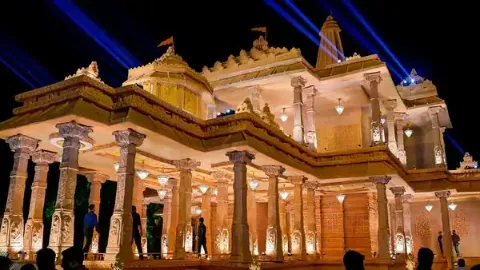
Ayodhya Ram Mandir Main Temple Structure
The Ayodhya Ram Mandir is constructed on an elevated platform and spans three levels, showcasing architectural elegance in the traditional Nagara style. At the heart of the temple, the Garbhagriha (sanctum sanctorum) is flanked by five grand mandapas, collectively known as the Shri Ram Darbar. These mandapas—Nritya, Rang, Sabha, Prarthana, and Kirtan—create a sacred journey from the entrance to the central shrine. Each mandapa is crowned with shikharas (spires), with the tallest spire directly above the sanctum, symbolizing divine ascent.
Dedicated shrines for deities—Surya, Bhagwati, Ganesh, and Shiva—are positioned at each corner, while temples for Annapurna and Hanuman grace the northern and southern arms. The temple’s resilient foundation includes a 14-meter (46-foot) layer of roller-compacted concrete, mimicking rock to ensure durability, capped by a 21-foot (6.4-meter) granite plinth that prevents moisture, using no iron. Accessibility features like ramps, lifts, and dedicated facilities ensure a welcoming space for the elderly and differently-abled.
Environmental initiatives are central to the Ayodhya Ram Mandir complex, preserving 70% of the surrounding 70-acre (28-hectare) grounds as green space with water conservation as a key priority. The temple grounds also include a Pilgrims Facility Centre with services for 25,000 visitors, including medical aid and lockers.
Columns and Deities
The Ayodhya Ram Mandir showcases 366 intricately carved columns, each featuring 16 deity figures, bringing to life various divine forms, including avatars of Shiva, the 10 Dashavataras, the Chausath Yoginis, and the 12 forms of Goddess Saraswati. The temple’s stairs are a notable 16 feet (4.9 meters) in width, enhancing accessibility for large gatherings. Following Vishnu temple traditions, the sanctum sanctorum is designed in an octagonal shape, adding to its spiritual symmetry.
The entire complex covers 4 hectares (10 acres), while the surrounding 23 hectares (57 acres) host a prayer hall, lecture hall, educational center, museum, and cafeteria. The Ayodhya Ram Mandir is prepared to accommodate up to 70,000 visitors daily.
Ayodhya Ram Mandir Construction and Global Contributions
Built using 600,000 cubic feet of sandstone from Baansi, Rajasthan, the temple uses no iron or steel. Over 10,000 copper plates were used to fuse stone blocks together. Notably, Thailand contributed soil and water from two rivers as a cultural homage during the temple’s inauguration, underscoring the global significance of the Ram Mandir.
The construction was made possible with the support of Larsen & Toubro, which offered its services for design and construction oversight at no cost. The project has also received assistance from the Central Building Research Institute, National Geophysical Research Institute, and IITs from Bombay, Guwahati, and Madras in critical areas such as soil testing and structural design. The final temple blueprint includes additional shrines dedicated to Surya, Ganesha, Shiva, Durga, Vishnu, and Brahma within the temple grounds, reflecting a holistic celebration of Hindu spirituality.
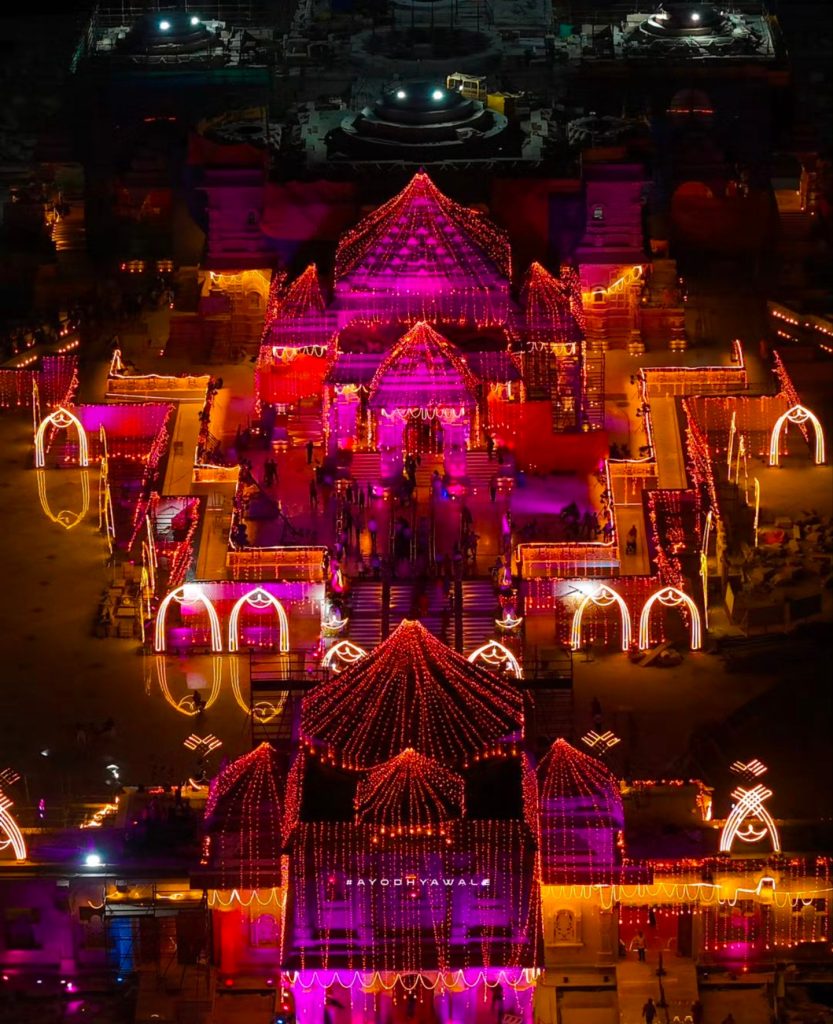
Key Architectural Features of the Ayodhya Ram Mandir
| Feature | Details |
|---|---|
| Complex Area | 2.7 acres |
| Built-Up Area | 57,400 sq. ft. |
| Temple Length | 360 feet |
| Temple Width | 235 feet |
| Temple Height (including spire) | 161 feet |
| Height of Each Floor | 20 feet |
| Ground Floor Columns | 160 columns |
| First Floor Columns | 132 columns |
| Second Floor Columns | 74 columns |
| Peaks and Pavilions | 5 |
| Gates | 12 entrances |
Ayodhya Ram Mandir Amenities – A Complex of Culture and Community
The Ayodhya Ram Mandir is more than a sacred site—it’s a monumental complex designed to honor the legacy of Lord Ram through devotional spaces, cultural zones, and community-centered facilities. Each area of the Ayodhya Ram Mandir has been thoughtfully planned to enhance the spiritual experience, making it a destination for pilgrims and visitors from across the world. Here’s what you can expect within the expansive Ayodhya Ram Mandir complex:
Ram Mandir features and amenities
- Shri Ram Kund – Yagyashala: Known as the home of holy offerings, this area in the Ayodhya Ram Mandir complex provides space for conducting karmic rituals that carry profound spiritual significance.
- Karm Kshetra – Anusthaan Mandap: Designed as the house of holy rituals, this part of the Ayodhya Ram Mandir enables devotees to partake in traditional ceremonies and observe ancient customs.
- Hanuman Gadhi – Veer Maruti Vishal Pratima: This space houses a gigantic statue of Lord Hanuman, symbolizing strength and devotion, a prime attraction within the Ayodhya Ram Mandir.
- Shri Pamlala Purakalik Darshan Mandal – Janbhoomi Sangrahalay: Within the Ayodhya Ram Mandir complex lies this museum, preserving archaeological and historical relics connected to Lord Ram’s birthplace, offering a unique cultural and historical immersion.
- Shri Kamm Keerti – Satsang Bhavan Sabhagaar: This hall for mass prayer and discourse invites devotees to gather and connect, reinforcing the collective spirit of the Ayodhya Ram Mandir.
- Guru Vashishtha Peethika: A dedicated center for studying the Vedas, Puranas, Ramayana, and Sanskrit, providing a scholarly space within the Ayodhya Ram Mandir for those interested in delving deeper into sacred texts.
- Bhakti Teela: A specially designed peace zone for meditation, offering a serene retreat within the Ayodhya Ram Mandir for those seeking a deeper connection through reflection.
- Tulsi – Ramlila Center: Featuring a 360-degree theater and open-air spaces, this area of the Ayodhya Ram Mandir celebrates Ramlila performances, bringing Lord Ram’s story to life.
- Ram Darbar: A multifunctional center for lectures, projections, and gatherings, promoting community engagement within the Ayodhya Ram Mandir.
- Mata Kaushalya Vatsalya Mandap: This exhibit hall brings to life the tableau of Lord Ram’s lineage, a prominent cultural attraction within the Ayodhya Ram Mandir complex.
- Ramangan: An AV-based cinema and theater providing immersive experiences, making Ayodhya Ram Mandir an interactive space for modern devotees.
- Ramayan Library: A modern AC library and reading room houses texts on the Ramayana, allowing devotees at the Ayodhya Ram Mandir to engage with teachings in comfort.
- Maharshi Valmiki Archives and Research Center: Located within the Ayodhya Ram Mandir, this research center preserves the legacy of Ram’s life and his teachings.
- Ramashrayam: A multistory lodging facility for visiting devotees, providing comfortable boarding within the Ayodhya Ram Mandir complex.
- Shri Dashrath Adarsh Goshala: Emphasizing tradition, this area within the Ayodhya Ram Mandir is a shelter for cows, reinforcing the temple’s commitment to reverence for life.
- Laxman Vatika: A scenic pond and musical fountain area, offering visitors to the Ayodhya Ram Mandir a peaceful place for reflection amidst nature.
- Kav Lush Nikunj: A designated area for youth and children within Ayodhya Ram Mandir, ensuring activities that engage and educate about cultural heritage.
- Maryada Khand: Special residential space within Ayodhya Ram Mandir, featuring cottages and apartments for devotees.
- Bharat Prasad Mandap: A center within Ayodhya Ram Mandir for the distribution of sanctified food offerings, featuring large-scale food preparation and storage facilities.
- Mata Sita Rasoi Annakshetra: A mass-feeding area that includes a mega kitchen, grain storage, and organized dining facilities for devotees, highlighting the inclusive nature of the Ayodhya Ram Mandir.
- Singhdwar Ke Sammukh Deepstamb: A grand lamp tower near the Lion Gate Portal, offering a symbolic welcome to the Ayodhya Ram Mandir.
Essential services for devotees
The Ayodhya Ram Mandir complex is not only a spiritual haven but also provides essential facilities:
- Multipurpose Rooms: Operational centers for streamlined temple management and service to visitors.
- Bank/ATM Access: Convenient banking facilities every 15 minutes along the temple pathways.
- Medical Aid & Accessibility: Emergency medical stations and ramps for elder devotees to ensure accessibility throughout the Ayodhya Ram Mandir.
- Sustainable Energy Solutions: Solar energy panels, generators, and energy centers exemplify the Ayodhya Ram Mandir’s commitment to sustainability.
Temple Region Development and Future Expansion
- Provision for Temples: Planned structures for temples both inside the parkota (temple perimeter) and outside, allowing for a balanced spatial layout.
- Fifty-Year Expansion Plan: A gradual, incremental expansion strategy designed to accommodate growth and evolving needs over the next fifty years.
- Three-Level Tree Plantation: A layered tree plantation surrounding the complex to shield the temple from seasonal dust and storms, ensuring a clean and serene environment.
- Security Management Complex: A dedicated complex for security operations, maintaining the safety of the temple and its visitors.
- Vigilance Towers: Surveillance towers along the temple perimeter, positioned to cover all possible angles for comprehensive security monitoring.
- Astrological Flower Garden: A thoughtfully designed flower garden and plantation inspired by astrological constellations, enhancing the spiritual and aesthetic atmosphere around the temple.
The Ayodhya Ram Mandir embodies spirituality, community, and cultural heritage. Each section is crafted to offer a unique and enriching experience for all who visit this iconic temple complex.
Milestone ceremony – Inauguration of Ayodhya Ram Mandir
The Ayodhya Ram Mandir journey began with a landmark event in August 2020, when Prime Minister Narendra Modi laid the foundation stone for the temple, marking the start of its construction with a grand Bhoomi Pujan (groundbreaking ceremony). This auspicious occasion involved an extensive three-day Vedic ritual, leading up to the installation of a 40 kg silver brick as the foundation stone. Ram Lalla’s idol was adorned in a special garment stitched by Bhagwat Prasad and Shankar Lal, tailors with a lineage of four generations dedicated to Ram’s idol.
The ceremony was further enriched by holy soil and water collected from prominent sites across India, including the Triveni Sangam at Prayagraj, Talakaveri in Karnataka, and Kamakhya Temple in Assam. These contributions, along with offerings from various temples and pilgrimage sites, symbolized the unity and sanctity infused into the temple foundation.
The construction of the temple has since progressed rapidly. On June 22, 2023, Temple Construction Committee chairman Nripendra Misra announced that the ground floor of the three-story Ayodhya Ram Mandir was complete, setting the stage for the temple’s partial opening for devotees in January 2024. Hindu astrologers selected January 22, 2024, as the auspicious date for the consecration ceremony, a highly anticipated event marked by rigorous security and a declared public holiday by the Uttar Pradesh Government. Prime Minister Modi was invited to perform the Prana Pratishtha (installation of life) of the new Ram Lalla idol in the sanctum sanctorum. In preparation, he observed an 11-day fast, drinking only coconut water and fruit, and performed the consecration from 12:15 PM to 12:45 PM IST on the designated day.
Construction chronicles – Progress and projections
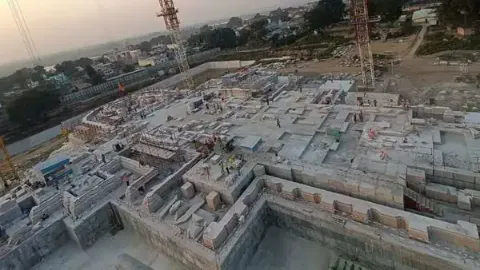
Construction Chronicles: Progress and Future Projections
The construction of the Ayodhya Ram Mandir has seen several significant developments. In January 2023, two ancient Shaligram rocks from the Gandaki River in Nepal, weighing 26 tonnes and 14 tonnes, were brought in to craft the Ram Lalla idol. By August 2023, nearly 70% of the temple’s groundwork and 40% of the roof work were reported as complete. Further milestones in December 2023 included the completion of the temple base, along with six smaller temples encircling the main sanctum.
With only the ground floor opened for the initial consecration, the Ayodhya Ram Mandir continues to move towards its completion, with expectations for full completion by July 2025. This incredible project stands as a testament to unity, devotion, and the enduring cultural heritage of India. Eager to monitor the temple’s progress and plan your Ayodhya visit? If you’re in Delhi, consider booking a Savaari to Ayodhya, ensuring a fulfilling spiritual journey.
Devotees’ overwhelming support
The immense backing through financial contributions for the Ram temple in Ayodhya has been heartwarming. To date, the trust overseeing the temple’s construction has garnered donations amounting to Rs 5,500 crore. Intriguingly, this figure is almost half of the Central government’s yearly allocation for the school’s midday meal initiative. The trust has been transparent about the temple’s financing, confirming it is realised solely through public donations.
A budget of Rs 1,100 crore is projected for the temple’s core construction. The remaining funds are earmarked for ancillary structures, including lodgings for pilgrims, a museum, and a conference hall. To provide perspective, the Central government has set aside Rs 10,234 crore in the 2022-23 budget, representing a 60% share, for the school midday meal program.
The emergence of Masjid Muhammad Bin Abdullah in Ayodhya
Amid the religious and cultural revival of Ayodhya, the city is set to witness the establishment of a significant new religious landmark, the Masjid Muhammad Bin Abdullah. This mosque, which comes as a replacement for the Babri Masjid, pays homage to the Prophet Muhammad and his father, Abdullah. Not only does the mosque bear profound religious significance, but its scale is equally noteworthy. Designed to become the largest mosque in India, it boasts the capacity to hold up to 9,000 worshippers at a time, highlighting its potential to become a central hub for the Muslim community in India.
The Supreme Court’s historic verdict on November 9, 2019, played a pivotal role in paving the way for this new religious structure. While the disputed 2.77-acre land was awarded to the Ram Janmabhoomi Trust, the apex court directed the government to provide an alternative 5-acre land to facilitate the construction of a new mosque. This equitable decision aimed to ensure harmony and respect for both religious communities.
Preparations for the construction of the Masjid Muhammad Bin Abdullah are advancing swiftly. The construction of began on 26 January 2021. The foundation stone laying ceremony is eagerly anticipated, marking the beginning of a new chapter for Ayodhya’s diverse spiritual landscape. In a symbolic gesture of unity and goodwill, the first brick for the mosque was ceremoniously presented at an event in Mumbai. It signified a broader hope for peaceful coexistence and mutual respect in Ayodhya and the nation at large.
Overseeing trusts – Guardians of construction
For the establishment and construction of significant religious structures, two pivotal trusts were formed. The Uttar Pradesh Sunni Central Waqf Board set up a 15-member trust, dedicated to overseeing the mosque’s construction. In contrast, the ‘Shri Ram Janmabhoomi Teerth Kshetra’ trust was constituted to manage the construction affairs of the Ram Mandir in Ayodhya, with an estimated budget of approximately Rs 1,800 crore.
Ayodhya Ram Mandir latest updates
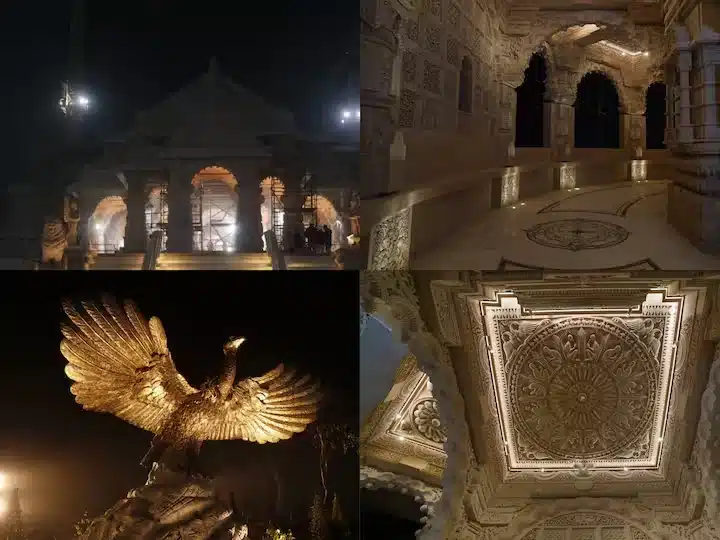
Ram Mandir Consecration Ceremony Highlights
- Historic Consecration: On January 22, 2024, the Ayodhya Ram Mandir held its grand consecration ceremony, drawing a prestigious gathering that included Prime Minister Narendra Modi, notable cricketers, influential politicians, celebrities, and dignitaries from around the world. This historic day marked a new era for the temple and its devotees.
- Enthroning Lord Ram’s Idol: A centerpiece of the consecration was the installation of Lord Ram’s idol in his childlike form within the sanctum sanctorum. The ceremony, held at noon, became a defining moment in the Ayodhya Ram Mandir’s history, symbolizing divine presence and blessings.
- Shri Ram Janmabhoomi Teerth Kshetra’s Role: Tasked with overseeing the Ayodhya Ram Mandir’s construction and management, the trust also unveiled the temple’s splendid Sinh Dwar (Lion Gate), further enhancing the temple’s grandeur in preparation for the consecration.
- Advanced Security Measures: To ensure a safe and orderly event, AI-powered CCTV surveillance was implemented throughout the Ayodhya Ram Mandir premises, showcasing high-level security measures for the occasion.
- Tirupati Laddus as Blessings: In celebration of the consecration, one lakh Tirupati laddus were distributed among the devotees attending the Ayodhya Ram Mandir event, sharing sweet blessings.
- Special Demand for Cesarean Deliveries: Reflecting the auspiciousness of the event, local hospitals in Ayodhya saw an increase in requests for cesarean deliveries on the day of the Ayodhya Ram Mandir’s inauguration, highlighting the cultural and spiritual significance of the occasion.
Upcoming Highlights and Developments
- Spire Construction: On October 26, 2023, the Ayodhya Ram Mandir began constructing its grand main spire, which will stand at 161 feet. The spire is expected to be completed within four months, adding a majestic touch to the temple’s architecture.
- Ramkatha Sangrahalaya Revamp: The Sri Ram Janmabhoomi Teerth Kshetra Trust is set to transform the Ramkatha Sangrahalaya museum with a high-tech remodel. The redesigned interiors will feature a digital display of Ramayana-era artifacts, discovered during the Ram Janmabhoomi excavation, enhancing the museum’s educational and cultural experience.
- Diwali 2024 – Aiming for a World Record: The Ayodhya Ram Mandir will celebrate its first Diwali by lighting a record-breaking 28 lakh eco-friendly diyas. Designed to minimize stains and soot, these lamps will illuminate the temple without affecting its structure, promising a breathtaking spectacle of devotion and tradition.
Ayodhya’s revival – How the temple will contribute to the city’s tourism
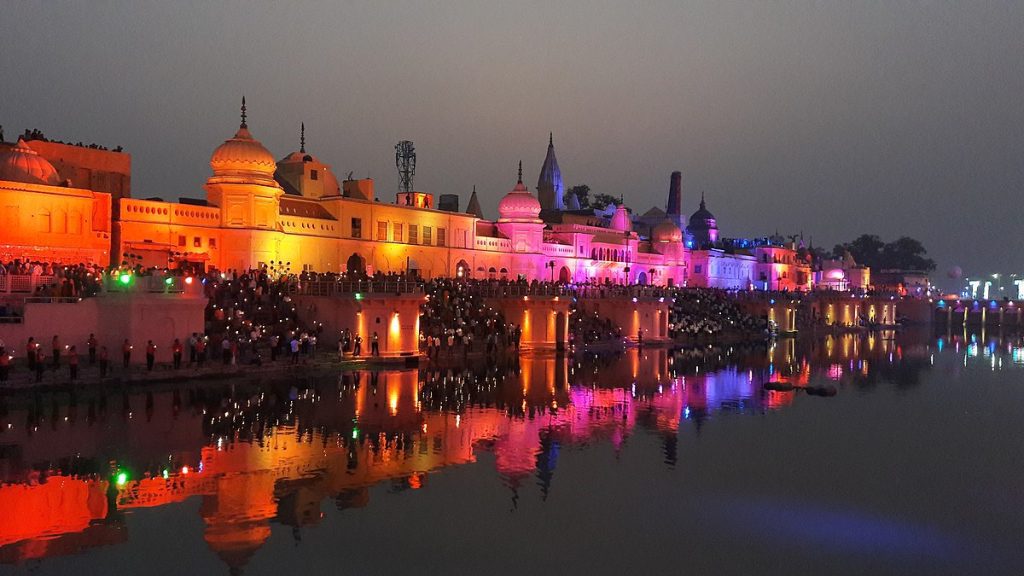
The construction of the Ram temple in Ayodhya marks not only a significant religious milestone but also the dawn of a new era for the city, promising to redefine its identity. One of the most tangible impacts of the temple will be the exponential boost it will provide to local tourism. Chief Minister Yogi Adityanath has projected that Ayodhya will likely witness a tenfold surge in tourist arrivals after the temple’s construction. This would effectively place Ayodhya on the national and potentially international map, drawing devotees and curious travellers alike.
This projected uptick in tourism isn’t just an optimistic estimate. The neighbouring city of Varanasi, renowned as the world’s oldest continually inhabited city and India’s cultural and spiritual hub, offers a glimpse into this potential. A journey to UP isn’t truly complete without connecting spiritually with Varanasi’s charm. Click here to discover compelling reasons to include Varanasi in your itinerary. The Shri Kashi Vishwanath Dham, inaugurated just a year ago, has transformed tourism patterns. Typically, Varanasi welcomes about one crore tourists annually. However, this figure was matched in the single month of Sawan after the inauguration.
UP’s forthcoming reign in pilgrimage circuits
Uttar Pradesh, blessed with cultural and religious landmarks, is poised to capitalize on this momentum. The state houses Naimisharanya, revered for its association with the Vedic Shrutis, and Chitrakoot, linked to Lord Ram’s exile. These sites, coupled with Ayodhya’s revived prominence, are set to amplify Uttar Pradesh’s tourism appeal. Furthermore, Chief Minister Adityanath has highlighted the untapped potential for both eco and heritage tourism. This includes regions like Terai, Vindhya, and Bundelkhand. In a move to make these attractions more accessible, the state is aggressively pursuing infrastructural advancements. Azamgarh once considered a less-visited region, is soon to be better connected with the inauguration of an airport. This is part of a broader strategy that envisions the establishment of airports in ten new locations. This includes Aligarh and Moradabad.
Booking a Savaari cab to Ayodhya from Lucknow, accompanied by local chauffeurs, is the most convenient choice for travellers eager to delve deep into the circuit. These chauffeurs offer more than just transportation. They come with a wealth of local knowledge, ensuring you not only travel but truly discover and immerse yourself in the essence of the place.
For those excited to set foot in the Ram Mandir of Ayodhya, 2024 presents a golden opportunity. To reserve your spot, simply follow the link for online bookings.
Booking procedure
- Head over to the official Ram Mandir website.
- Navigate to the Darshan Booking section.
- Choose your preferred date, mention the number of attendees, and secure a token.
- Ensure you have your token on hand during your visit to the Shri Ram Mandir in Ayodhya.
- The portal also facilitates bookings for Jagran and additional offerings.
Ayodhya Ram Mandir as a beacon for tomorrow
More than a testament to religious devotion, the temple embodies the nation’s collective heritage. It narrates tales of epochs gone by and mirroring the intricate layers of Indian ethos.
For many, a visit to the Ram Mandir is a pilgrimage into the depths of India’s soul. It invites not just the devout but also the curious, the historians, and the seekers. This inclusivity amplifies the temple’s role as a bridge, potentially uniting people from varied backgrounds and beliefs under the vast canopy of shared cultural respect. Such unity, fostered in the shadows of this magnificent edifice, can ignite a deeper understanding and appreciation, diminishing the lines of difference and encouraging communal harmony.
Furthermore, the temple is poised to become a catalyst for Ayodhya’s economic rejuvenation. As pilgrims and tourists flock to the city, local businesses, artisans, and service sectors are set to thrive. To facilitate and enhance this journey, one can perfectly explore the city and its surroundings with ease by downloading the Savaari car rental app. This convenient service ensures that visitors can immerse themselves in Ayodhya’s beauty and significance without the hassle of transportation concerns. The Ram Mandir through its towering spires and hallowed halls, beckons all to partake in its story, to witness India’s soul, and to be a part of its onward journey toward harmony and progress.
Last Updated on October 30, 2024 by Shabari Shankar
